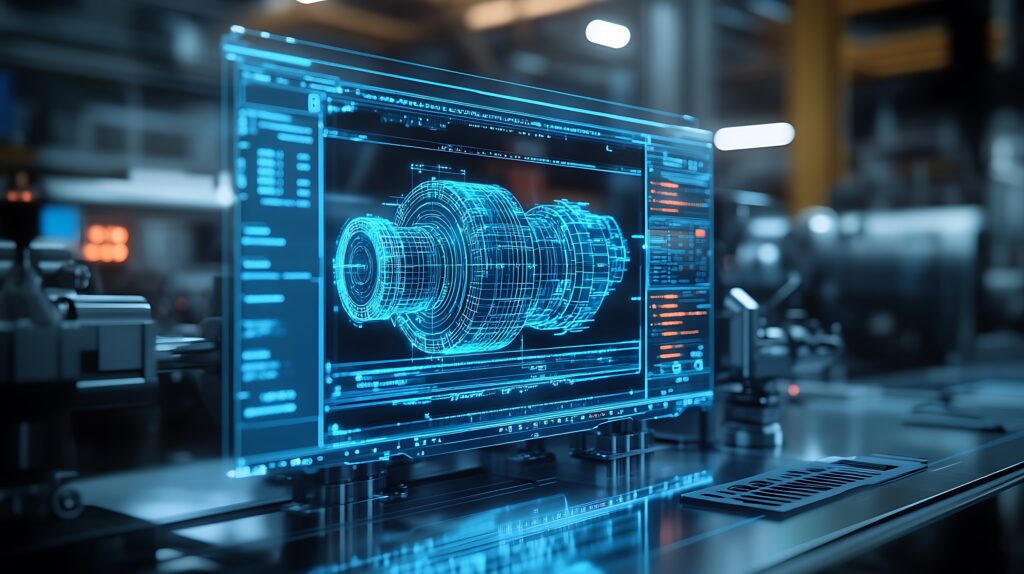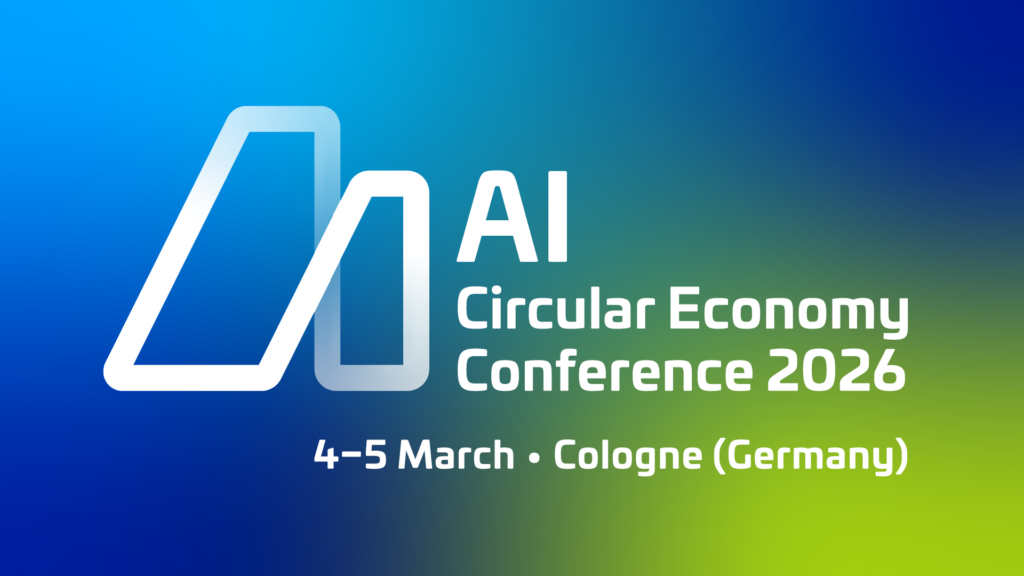From Materials and Models: How AI is Revolutionising the Circular Economy
Artificial Intelligence creates a direct link between material design and circular economy goals by integrating durability, recyclability and lower carbon intensity as design parameters from the very start

Gradually, but with unstoppable momentum, artificial intelligence (AI) is rewriting the rulebook of circular design, reducing years of trial and error to just weeks. Like a tireless research partner, AI generates millions of molecular structures, instantly predicts their properties, and swiftly identifies the most promising options - eliminating the need for time-consuming laboratory testing.
This transformation goes beyond speed; it fundamentally transforms the entire discovery process. By transferring much of the initial work to the digital domain, researchers can focus their laboratory efforts on the most promising options. AI creates a direct link between material design and circular economy goals by integrating durability, recyclability and lower carbon intensity as design parameters from the very start.
New Possibilities with Digital Twins
Digital twins – virtual replicas of physical systems that are updated in real time – are another game-changing digital tool. Beyond monitoring, they allow researchers and companies to simulate scenarios, optimise resource use, and predict wear or failure. In practice, this extends product lifespans, enables smarter recycling, and establishes feedback loops between production and use. Digital Twins are therefore becoming a vital bridge between the physical and digital worlds, supporting transparency and circular value creation.
AI-Powered Material Discovery: From Nobel-Level Breakthroughs to Self-Driving Science
The landscape of AI-driven platforms for materials discovery is evolving at remarkable pace: DeepMind’s GNoME, already described as Nobel Price–worthy, has revealed millions of novel crystal structures; MatterGen and MatterSim have recently showcased how generative and simulation tools can accelerate the design of materials with tailored properties; further advances include AlphaMat, enabling large-scale property prediction, and MatterGPT, a generative transformer for multi-property design. Alongside these, industry platforms such as XtalPi, Orbital Materials, DP Technology, CuspAI, Lila Sciences, and Deep Principle are combining generative models with automated experimentation, pointing towards a new era of self-driving materials science.
These AI systems generate and virtually test thousands of material candidates in record time, reducing the discovery cycle from years to weeks. By combining generative design with high-fidelity simulation, they pave the way for sustainable, high-performance solutions in sectors such as energy, construction, and advanced manufacturing.
MLMD: No-Code Discovery for Sustainability
In parallel, researchers featured in Nature Scientific Reports introduced MLMD: a no-code platform combining active learning and surrogate optimisation. Unlike traditional methods, which depend on extensive prior datasets, MLMD can efficiently guide experiments even when information is scarce. This makes it particularly valuable for circular and sustainability-driven applications, where the rapid and cost-effective development of new materials is crucial.1
Taken together, these developments demonstrate that AI is not merely supporting material research, but actively reshaping it. The common thread is clear, from industry leaders like Microsoft to academic pioneers developing no-code platforms: artificial intelligence is accelerating the discovery of greener, more circular solutions at an unprecedented pace.
AI in the Renewable Carbon Economy
These breakthroughs represent more than just isolated research successes; they signal a broader transformation that is currently taking place. By combining digital discovery tools with practical material applications, AI is paving the way for the so-called renewable carbon economy. This concept encompasses bio-based, CO₂-based and recycled materials designed to replace fossil resources and maintain a cycle of carbon within closed loops. The following examples demonstrate how AI is already bringing this vision to life with tougher, longer-lasting plastics and low-carbon cement for sustainable construction.
Smarter Plastics Are Stronger Plastics
Researchers at MIT and Duke University demonstrated that artificial intelligence can transform polymer development by creating plastics that are up to four times tougher than traditional ones. The team identified iron-based mechanophores — molecules that respond to mechanical stress — that act as weak crosslinkers within polymers by applying machine learning. Contrary to expectation, these weak links strengthen the material overall, enabling cracks to divert and disperse energy rather than causing catastrophic failure. This AI-driven discovery accelerates a process that would otherwise take weeks of laboratory work and opens new pathways for developing more durable, recyclable and sustainable plastics. Extending the lifespan of plastic products reduces waste and the need for production, making this approach highly relevant for the transition to renewable carbon and a circular economy. AI is becoming a key enabler of sustainable material innovation, from designing bio-based and CO₂-based polymers to optimising recycling processes.2
Building a Low-Carbon Future with AI-Designed Cement
Artificial intelligence is now being used to address one of the world’s biggest sources of CO₂ emissions: cement production. Researchers at the Paul Scherrer Institute (PSI) have developed an AI-driven approach to design new types of cement that are just as strong but much less carbon-intensive. By simulating complex molecular structures and reactions, the system speeds up the search for eco-friendlier formulations that could replace today’s highly polluting cement production methods. As cement accounts for around 8% of global CO₂ emissions, these smarter materials could be pivotal in decarbonising the construction industry and enabling more sustainable infrastructure.3
These are just some of the most exciting examples of how AI is progressively revolutionising the circular economy. Together, these breakthroughs illuminate a future where AI-driven digital discovery and sustainable material design converge—helping build a truly circular economy with renewable carbon at its core.

Uncover the Full Potential of Artificial Intelligence
Looking for more examples and exchange of expertise at the crossroad of circular economy and artificial intelligence? Register for the AI Circular Economy Conference 2026, 4-5 March in Cologne (Germany) and online: https://ai-circulareconomy.eu
Call for abstracts is open until 5 September 2025: https://ai-circulareconomy.eu/call-for-abstracts/
1 Nature. https://www.nature.com/articles/s41524-024-01243-4
2 MIT News. https://news.mit.edu/2025/ai-helps-chemists-develop-tougher-plastics-0805
3 PSI – Paul Scherrer Institute. https://www.psi.ch/en/news/media-releases/ai-paves-the-way-towards-green-cement
Source: nova-Institute, original text, 2025-08-28.
